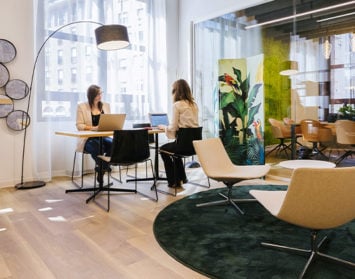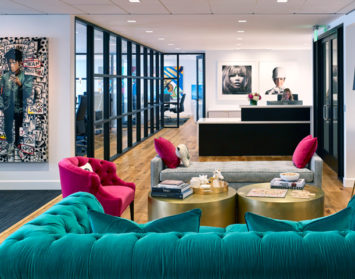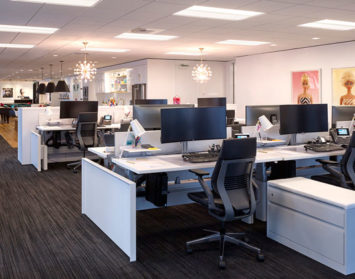By Nicholas Willis
Returning to the workplace is a topic that is discussed now more than ever, and one that Hughes Marino and our Planning + Design team addresses every day. We’ve had the opportunity to communicate with many of our clients through the various stages of the pandemic, and our most recent conversations are (finally!) focused on what a RTO (Return-To-Office) looks like.
With vaccinations on the rise and case rates declining there is much to look forward to as we tentatively open our workplaces and welcome teams back into collaborative, engaging environments. Almost a year ago when we wrote 8 Practical Steps for a Safer Office Environment, there was uncertainty whether many companies would return in the short-term and benefit from those tips. As we begin to move beyond workplace safety and start to optimize our space for the new normal, those prior thoughts resonate, while new ideas emerge. The objective remains to keep our teams safe, while also recognizing and solving for the effects the pandemic has had on our routines, lifestyles and comfort levels, and how the resulting adaptation in behaviors impact the function of the workplace. Here are eight things for businesses to consider when creating a successful return to office strategy.
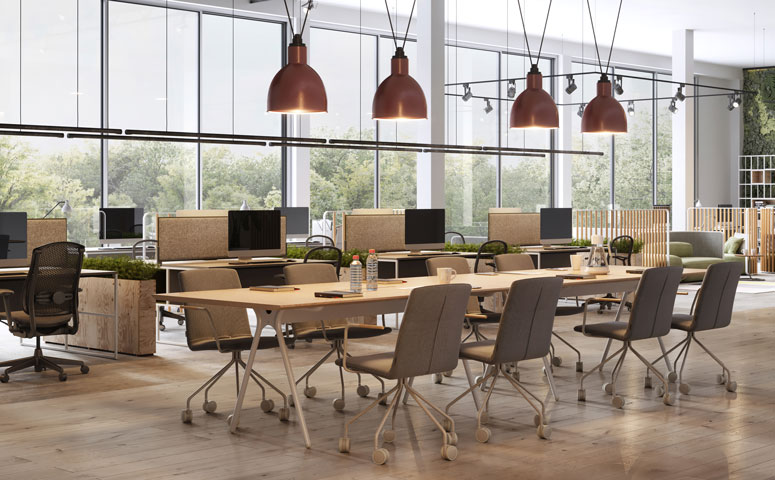
1. Continue a flexible approach with re-entry policies and timelines.
A return to office does not need to be an all-or-nothing approach. Experimenting with strategies as protocols and recommendations continue to evolve could be an investment in discovering the right balance for the future. Health and safety recommendations are constantly and rapidly changing, and an agile approach allows companies to respond in kind. With all of the changes we have all experienced within the last year, teammates should be understanding of the fact that the return-to-office situation will remain fluid for some time, however the initial decisions made could be the foundation for future guidelines!
2. Reinforce commitments to employee health and well-being.
There will be significant hurdles to everyone immediately returning to a full time in-office schedule. Even in a fully vaccinated office, some team members will continue to be concerned about transmission. For working parents, school closures will impact schedules. Wellness policies and flexible sick leave for caregiving, where not mandated, will be helpful in giving everyone a sense of security and stability.
3. Survey your team.
Continuously and anonymously gauge your team’s comfort level in the office to determine where policies should be reinforced, but also where they can be relaxed. If you need any ideas on how to craft an employee survey, our team has developed an example that we are happy to share!

4. Know that planning a Return-to-Office is industry specific.
Many companies never fully left the office due to the essential nature of their business, or because their offices provide functional resources that were necessary for day-today work. Companies that were able to go fully remote can now learn about successful strategies from the former who had to implement safety procedures and policies early in the pandemic and find a way to stay safe in the office.
5. Acknowledge that some members of your team have gotten used to more privacy and will need more time to adapt.
There have been many jokes about how socially awkward some of us have become resulting from limited interaction. An abrupt return to the hum of a full office will be jarring to some and returning to a more public forum could take getting used to! Try to find options within the space or in team member’s schedules to carve out quieter places and moments to allow for an easier transition from home back to the workplace.
6. Examine the density of your current environment and create more physical separation if necessary.
Not coincidentally, the industries we’ve seen most eager to return full time to the office have office space designed with a high concentration of individual offices and lower densities. We still recommend checking in on your current office density and mitigating overpopulation of your space, and offer our physical distancing analysis services to companies who need assistance with navigating this new normal.
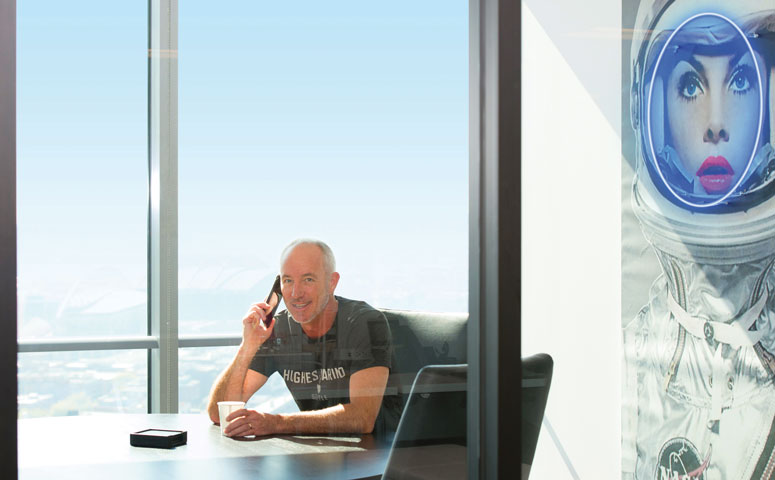
7. Set up the “Zoom Room.”
At least in the short term, many meetings will include both in-person and remote participants. It’s important for meetings of over two to three people that the right resources are in place to make them efficient so teammates aren’t left scrambling to set up technology. With travel restrictions still occurring and offices limiting visitor access, video conferencing will continue to be a viable alternative for a broader population than prior to the pandemic. We highly encourage businesses to make sure all technology is flawlessly up and running before teams return to the office, including implementing training procedures with proper documentation in place to save time (and avoid as much confusion as possible!) with this new normal of hybrid communication.
8. Consider the collaboration zones.
All research repeats that what people miss most about the office are their teams, so be sure to get your space ready for more open dialogue! One watercooler is not going to suffice for the number of staff eager to engage with each other. Some of our clients are even abandoning individual desks and adding soft seating groups or breakout high tables to create more areas for cross collaboration and team communication.
We’re excited for the potential opening of more offices and eager to see our clients succeed with their RTO strategies. For strategies on organizing your space for a new normal, please get in touch as we have already helped many clients return to work and are more than happy to help your company too!
Nicholas Willis is interior planning director at Hughes Marino, a global corporate real estate advisory firm that exclusively represents tenants and buyers. Contact Nicholas at 1-844-662-6635 or nicholas.willis@hughesmarino.com to learn more.


